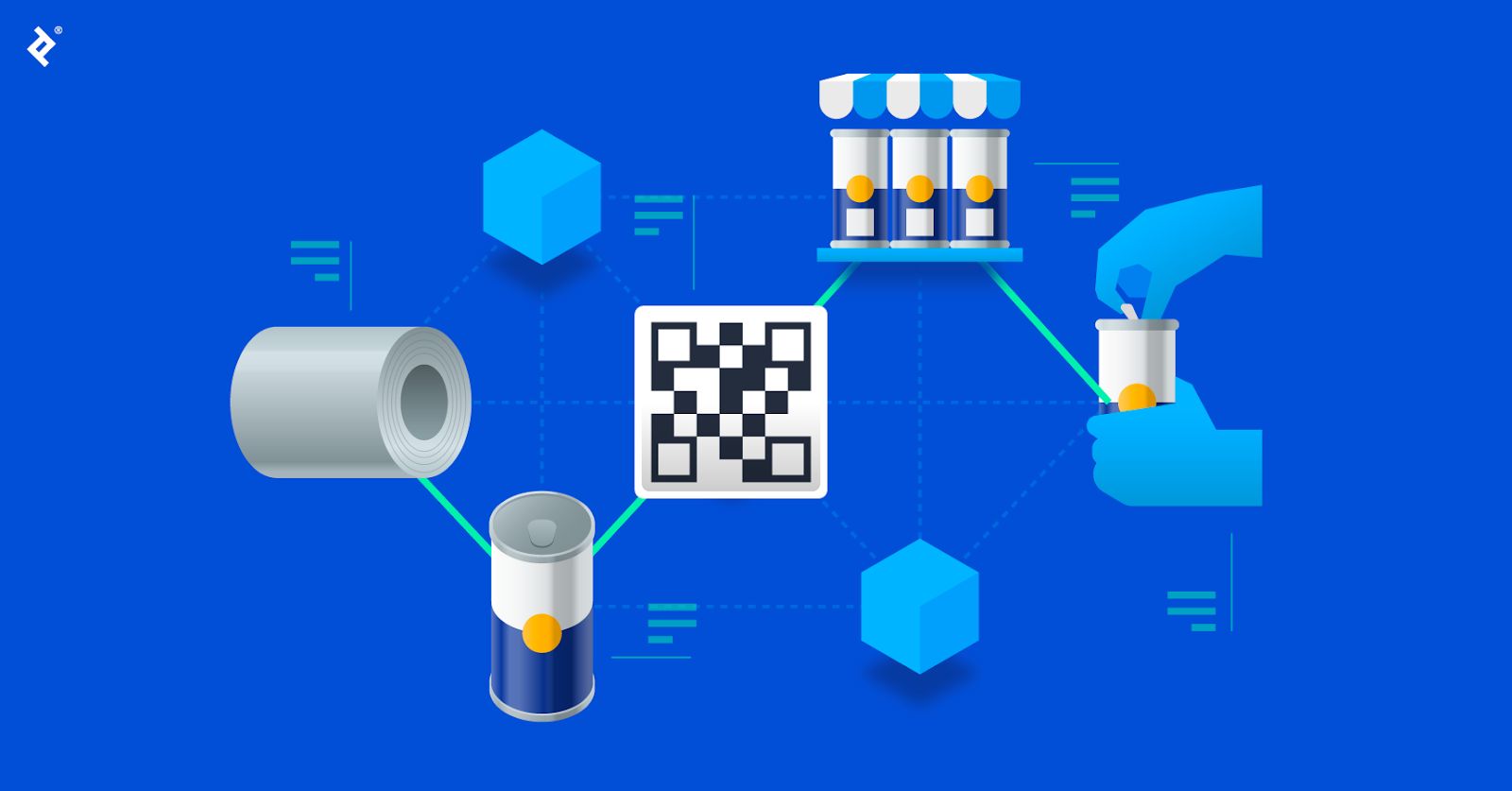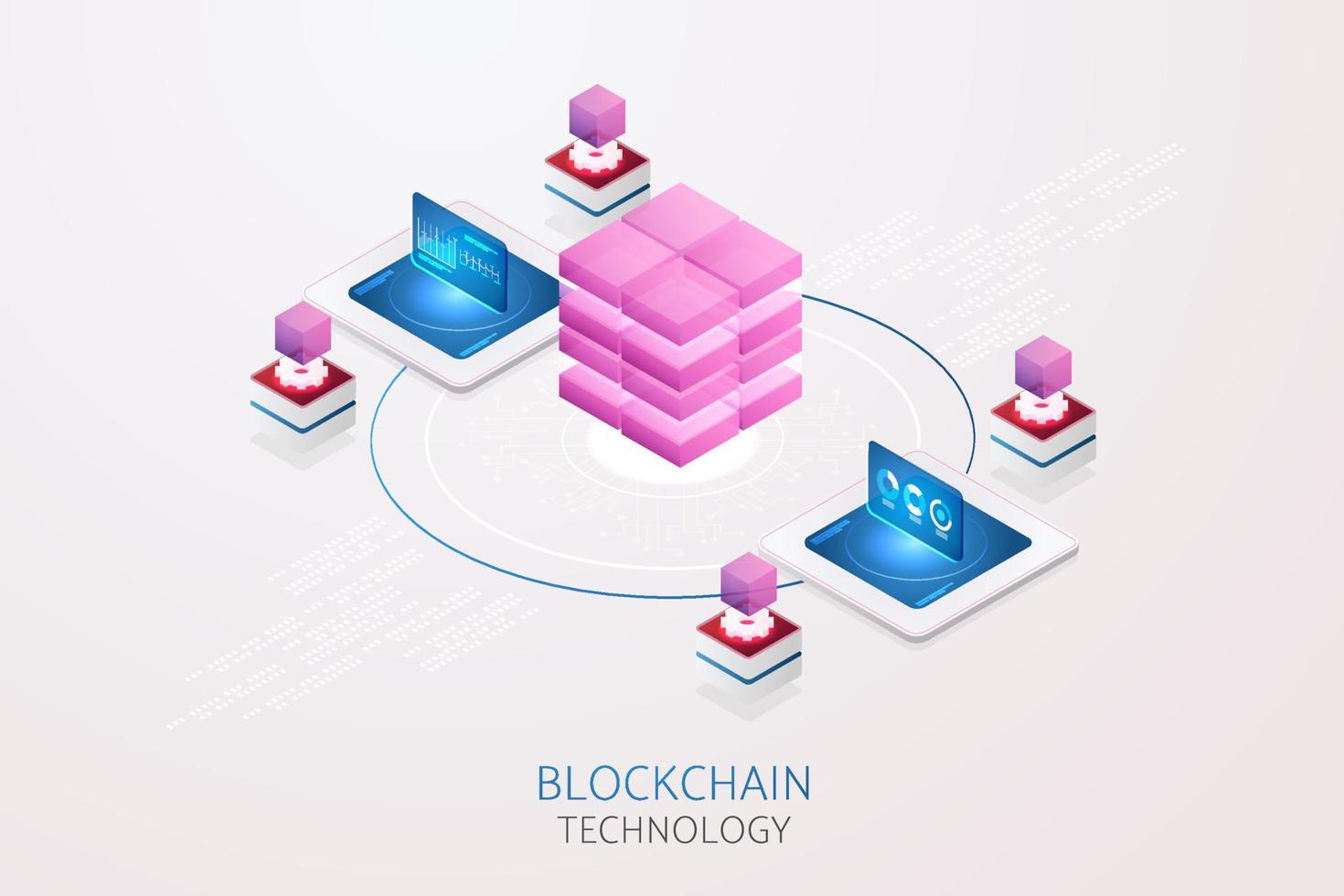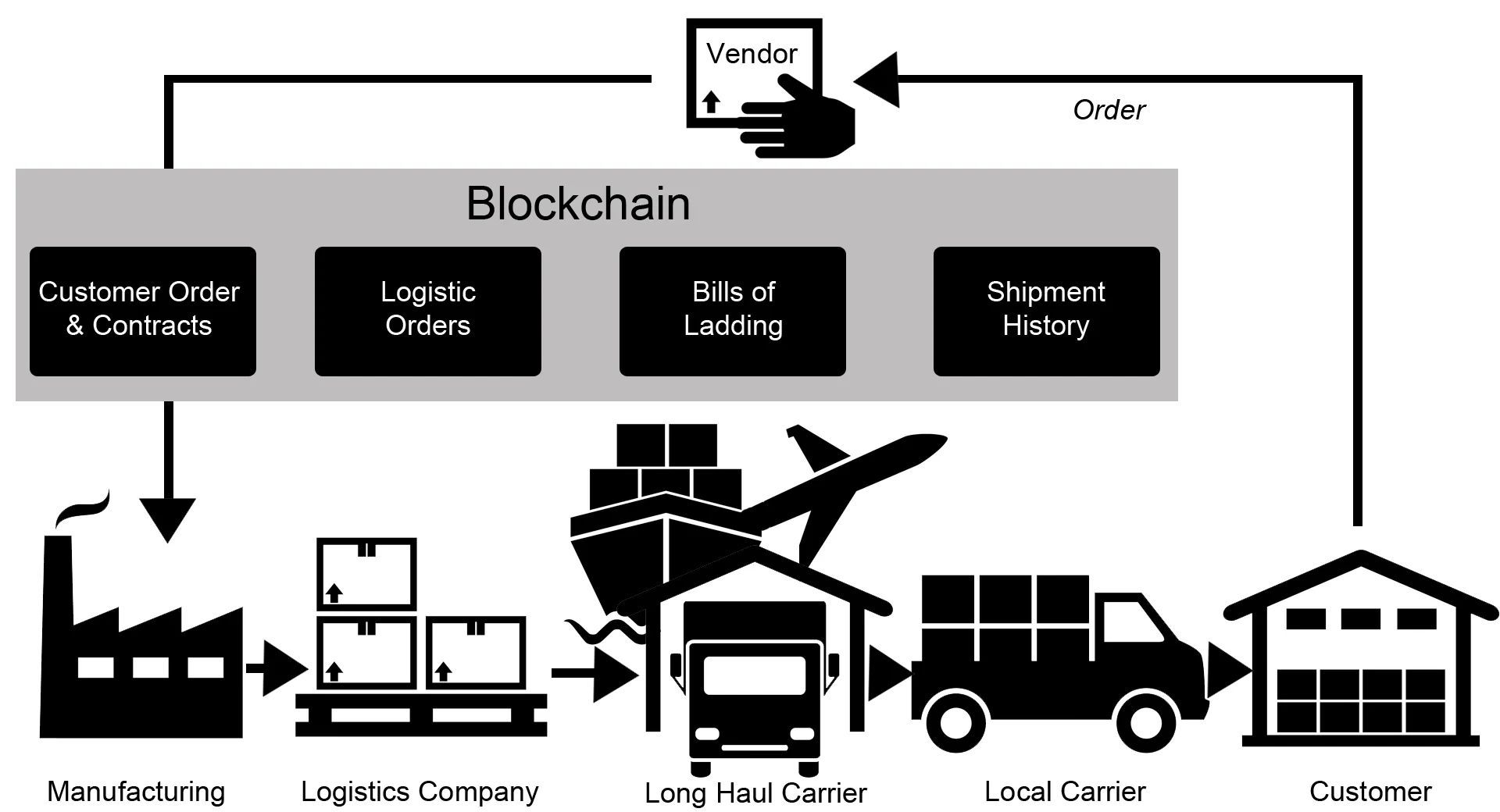Introduction
Welcome to the world of blockchain technology, where the blockchain is no longer just a buzzword but a revolutionary concept transforming various industries. Blockchain has gained immense popularity due to its decentralized and immutable nature, offering secure and transparent transactions without the need for intermediaries. But have you ever wondered how the integrity of the entire blockchain is maintained with each new block that is added? In this article, we will explore how each additional block strengthens the integrity of the entire chain.
At its core, a blockchain is a distributed ledger that records a series of transactions in an ordered and tamper-proof manner. It serves as a transparent and shared database, accessible to all participants within a network. Each block in the blockchain contains a set of transactions, a timestamp, and a reference to the previous block, forming a chain-like structure.
As transactions occur, they are bundled into blocks and added to the existing chain using a consensus mechanism, ensuring that all participants agree on the validity of the transactions. This decentralized approach eliminates the need for a central authority and makes the blockchain highly secure and resistant to fraud or tampering.
When a new block is added to the blockchain, it undergoes a verification process to ensure the integrity and validity of the transactions it contains. This verification is done by multiple participants, known as miners or validators, who use computational power to solve complex mathematical puzzles, known as proof-of-work or other consensus mechanisms like proof-of-stake. Once the block is validated and added to the chain, it becomes an integral part of the blockchain and cannot be altered without consensus from the entire network.
The security and immutability of the blockchain come from the interconnectedness of its blocks. Each block contains a reference, called a hash, to the previous block in the chain. This linking creates a chronological order of transactions, making it virtually impossible to modify or tamper with previous blocks without disrupting the entire chain. Any attempt to alter a block would require a tremendous amount of computational power, making the blockchain highly resistant to hacking or manipulation.
In the following sections, we will delve deeper into the verification process, consensus mechanisms, and the significance of each additional block in strengthening the integrity of the entire blockchain. By understanding how the blockchain works on a fundamental level, we can better appreciate its potential and the impact it can have on various industries.
What is a Blockchain?
A blockchain is a decentralized and distributed digital ledger that records transactions across multiple computers or nodes. It is designed to be secure, transparent, and resistant to tampering, making it an ideal solution for industries that require trust and accountability.
At its core, a blockchain is composed of a series of interconnected blocks, each containing a bundle of transactions. These transactions can represent various types of information, such as financial transactions, contracts, records, or even digital assets.
The blockchain operates on a peer-to-peer network architecture, where each participant, or node, has a copy of the entire blockchain. This decentralized structure ensures that no single entity has control over the network, making it more resilient against attacks or single points of failure.
The transparency of the blockchain is one of its most notable features. Unlike traditional centralized databases, where data can be altered or manipulated without detection, blockchain transactions are visible to all participants in the network. This transparency fosters trust and accountability, as all parties can verify the authenticity and integrity of the transactions.
Another key characteristic of the blockchain is its immutability. Once a block is added to the chain, it becomes extremely challenging to modify or remove. This immutability is achieved through cryptographic techniques, whereby each block contains a unique identifier, or hash, that depends on the data within the block and the hash of the previous block. Any alteration to a block would require changing the data of that block and recalculating the hash, which would also affect the hashes of all subsequent blocks. This interconnectedness ensures that any tampering attempt would be noticeable to the entire network.
The security of a blockchain is upheld through consensus mechanisms. Consensus mechanisms are the rules by which nodes in the network agree on the validity of transactions and the order in which they are added to the blockchain. The most well-known consensus mechanism is proof-of-work, where nodes compete to solve complex mathematical puzzles to add a new block. Other consensus mechanisms, such as proof-of-stake and delegated proof-of-stake, rely on different principles to reach consensus.
In summary, a blockchain is a distributed ledger technology that allows for secure, transparent, and tamper-resistant recording of transactions. Its decentralized nature, transparency, immutability, and consensus mechanisms make it a powerful tool for industries seeking enhanced trust, efficiency, and accountability in their operations.
How Does a Blockchain Work?
Understanding how a blockchain works is key to appreciating its benefits and potential applications. At its core, a blockchain is a decentralized and distributed digital ledger that records transactions in a transparent and secure manner.
The process begins with participants initiating transactions, which can represent various types of information or digital assets. These transactions are grouped together into blocks, forming a sequential chain of data. Each block contains a unique identifier, called a hash, which is generated using cryptographic algorithms. The hash serves as a digital fingerprint for the block and ensures its integrity.
The interconnectedness of the blocks is a fundamental aspect of blockchain technology. Each block includes a reference to the previous block’s hash, forming a chain-like structure. This linking ensures that any modification to a block would require changing the data in that block and recalculating the hash, which in turn would affect the hashes of all subsequent blocks. This property makes the blockchain highly resistant to tampering and provides a transparent record of all transactions.
Adding a new block to the blockchain involves a process called consensus. Consensus mechanisms, such as proof-of-work or proof-of-stake, are used to ensure that all participants in the network agree on the validity of the transactions and the order in which they are added. In proof-of-work, miners compete to solve complex mathematical puzzles, requiring computational power and energy expenditure. The first miner to solve the puzzle is authorized to add a new block to the chain. Proof-of-stake, on the other hand, relies on participants staking a certain amount of cryptocurrency as collateral and being chosen to add a new block based on their stake.
Once a new block is added to the chain, it is propagated to all participating nodes in the network. Each node independently validates the block, ensuring that the transactions within it adhere to the predefined rules and that the block’s hash matches the reference to the previous block. This validation process ensures the trustworthiness and integrity of the blockchain.
The decentralized nature of blockchain technology plays a crucial role in its operation. Instead of relying on a central authority or intermediaries to validate and record transactions, the blockchain relies on a distributed network of computers, each maintaining a copy of the blockchain. This redundancy and distribution make the blockchain more resilient to attacks, censorship, or single points of failure.
Overall, a blockchain works by creating a decentralized and transparent ledger of transactions. Through the use of consensus mechanisms, cryptographic algorithms, and interconnectedness of blocks, it ensures the integrity, security, and immutability of data. This technology has the potential to transform various industries by enabling trustless transactions, reducing costs, and fostering innovation.
The Role of Blocks in the Blockchain
In the architecture of a blockchain, blocks are the building blocks that form the foundation of the entire system. Each block serves a crucial role in maintaining the integrity and security of the blockchain.
When transactions occur within the network, they are grouped together into blocks. These blocks contain a set of transactions, a timestamp, and a unique identifier called a hash. The hash is generated using cryptographic algorithms and serves as a digital fingerprint for the block. It ensures the authenticity and integrity of the data within the block.
The interconnectedness of the blocks is a key characteristic of the blockchain. Each block contains a reference, called a hash pointer, to the hash of the previous block in the chain. This linking creates a chronological order of transactions and forms an unbroken chain of blocks. By referencing the previous block’s hash, the blockchain ensures that any modification to a block would require changing the data within that block and recalculating the hash, which would in turn affect the hashes of all subsequent blocks. This property introduces a high level of security and immutability to the system, making it extremely difficult for malicious actors to tamper with the blockchain without detection.
The timestamp included in each block helps establish the order of transactions and provides a record of when the transactions occurred. This feature is particularly important when dealing with time-sensitive operations or when auditing the sequence of events.
Blocks also play a vital role in the consensus mechanism of the blockchain. Consensus mechanisms ensure that all the participants in the network agree on the validity of the transactions and the order in which they are added to the blockchain. The process of adding a new block to the blockchain usually involves a competition among miners or validators, who use computational power or stake their assets to solve mathematical puzzles or reach consensus through different mechanisms. Once a block is validated and added to the chain, it becomes an integral part of the blockchain and contributes to the overall decentralization and security of the network.
Moreover, blocks in the blockchain serve as a means of storing and recording data. They can contain various types of transactions, such as financial transactions, supply chain information, smart contracts, or even digital identities. The immutability and transparency of the blockchain ensure the integrity and accessibility of this data, allowing participants to verify and validate the historical transactions and trace the provenance of assets or information.
In summary, blocks are essential components of the blockchain. They contain transactions, timestamps, and hashes that ensure the integrity, security, and chronological order of the data. The interconnectedness of blocks creates an unbreakable chain, making the blockchain resistant to tampering and providing transparency to all participants. The role of blocks extends beyond data storage and includes consensus mechanisms, establishing trust among the network participants, and enabling a wide range of applications and use cases.
What Happens When a New Block is Added?
When a new block is added to a blockchain, it triggers a series of events that ensure the integrity and continuity of the blockchain network. This process involves verification, consensus, validation, and propagation of the new block among the participants.
Firstly, the new block undergoes a verification process to ensure its validity and integrity. This verification typically involves multiple participants, known as miners or validators, who compete to solve complex mathematical puzzles or reach consensus through different mechanisms. These puzzles or consensus rules are designed to be computationally intensive, requiring a significant amount of energy and computational power to solve. The first participant who successfully solves the puzzle or meets the consensus requirements is authorized to add the new block to the blockchain.
Once the new block is validated, it is added to the existing chain. To maintain the chronological order, each new block contains a reference to the hash of the previous block. This reference, also known as a hash pointer, ensures that all blocks are interconnected, forming an unbroken chain. Any attempt to modify a block would require recalculating the hash of that block and all subsequent blocks, which would disrupt the entire chain and be noticeable to all participants in the network.
The validation of the new block involves verifying the transactions it contains. This process ensures that the transactions comply with the predefined rules of the blockchain and that they are legitimate. Various checks, such as verifying digital signatures, checking for double spending, or validating the transaction inputs and outputs, are performed to maintain the integrity and security of the blockchain.
Once the new block is validated and added to the chain, it is propagated to all participating nodes in the network. This propagation ensures that every node maintains an updated copy of the blockchain. Each node independently verifies the new block to ensure consistency and concurs with the consensus mechanism’s rules. This redundancy and distribution of the blockchain across multiple nodes enhance its security and resilience, as it becomes difficult for a single point of failure or malicious actor to manipulate the blockchain’s data.
Adding a new block to the blockchain not only strengthens the integrity of the chain but also contributes to the decentralization and security of the entire network. The interconnectedness of blocks and the consensus mechanisms used in the process ensure that all participants agree on the validity and order of transactions. This agreement is fundamental to the trustworthiness and robustness of the blockchain system.
In summary, when a new block is added to the blockchain, it undergoes a verification process, is validated, and becomes part of the chain. The interlinking of blocks ensures the chronological order of transactions and makes the blockchain tamper-resistant. The propagation of the new block to all participating nodes enhances the decentralization and security of the network. This process forms the foundation for maintaining the integrity, transparency, and trust in the blockchain technology.
Verifying Transactions and Consensus Mechanisms
Verifying transactions and achieving consensus are critical aspects of a blockchain network. These processes ensure the validity, integrity, and trustworthiness of transactions within the blockchain. By leveraging consensus mechanisms, participants in the network can agree on the order of transactions and maintain a consistent view of the blockchain.
When a transaction is initiated within the network, it undergoes a verification process to determine its legitimacy. The verification process varies depending on the specific blockchain implementation, but generally involves several checks. These checks can include verifying digital signatures to ensure that the transaction has been authorized by the appropriate parties, checking for sufficient funds or assets to complete the transaction, and validating any additional conditions or requirements set within the blockchain’s rules.
Consensus mechanisms play a crucial role in ensuring that all participants in the blockchain network agree on the legitimacy and chronological order of transactions. These mechanisms establish a set of rules or protocols that nodes in the network must follow in order to reach a consensus. The most well-known consensus mechanism is proof-of-work (PoW), used by Bitcoin and several other cryptocurrencies. In PoW, miners compete to solve complex mathematical puzzles, with the first miner to solve the puzzle being allowed to add the next block of transactions to the blockchain. This process requires significant computational power and energy expenditure, making it difficult for a single malicious actor to control the network.
Another popular consensus mechanism is proof-of-stake (PoS), which operates by participants “staking” their cryptocurrency holdings as collateral. The probability of a participant being chosen to add the next block is proportional to the amount of cryptocurrency they have staked. This mechanism incentivizes participants to act in the best interest of the network, as their stake is at risk if they behave maliciously.
Other consensus mechanisms, such as delegated proof-of-stake (DPoS) and practical Byzantine fault tolerance (PBFT), are used in different blockchain networks to achieve consensus. DPoS leverages the election of a limited number of trusted nodes, known as delegates, to validate transactions and create new blocks. PBFT focuses on reaching Byzantine fault tolerance, which allows the network to continue functioning even if some nodes are faulty or malicious.
Consensus mechanisms not only ensure agreement on the validity and order of transactions but also contribute to the security and decentralization of the blockchain network. They prevent a single entity or group from controlling the network and ensure that all participants have an opportunity to participate in the consensus process.
The consensus process typically involves a majority of participants agreeing on the validity of a transaction or block. This agreement is reached through a combination of computational power, stake, or trusted election processes, depending on the chosen consensus mechanism. Once consensus is reached, the verified transaction or block is added to the blockchain, maintaining the integrity and transparency of the network.
In summary, the verification of transactions and consensus mechanisms are integral components of a blockchain network. Verification ensures the legitimacy of transactions, while consensus mechanisms enable participants to agree on the validity and order of transactions. These processes contribute to the trust, integrity, security, and decentralization of the blockchain, fostering transparency and making it an ideal solution for secure and decentralized applications.
Security and Immutability of the Blockchain
The security and immutability of the blockchain are fundamental characteristics that contribute to its reliability and trustworthiness. These features ensure that the data stored within the blockchain remains uncompromised and tamper-proof, providing a secure and transparent environment for transactions.
The security of the blockchain is upheld through the use of cryptographic algorithms. Transactions within the blockchain are secured through digital signatures, which guarantee the authenticity and integrity of the data. Digital signatures utilize asymmetric encryption techniques, where each participant has a private key for signing transactions and a public key for verification. This cryptographic process ensures that only the authorized participants can sign transactions and that the information contained within the transactions remains confidential and tamper-proof.
Furthermore, the structure of the blockchain itself reinforces its security. Each block in the chain contains a reference, in the form of a hash pointer, to the previous block’s hash. This linking creates an interconnected chain of blocks, with any modification to a block generating a different hash, which would subsequently affect the hashes of all subsequent blocks. By creating this interdependence, the blockchain ensures that any attempt to tamper with the data within a block would be immediately detected, as it would disrupt the entire chain, alerting all participants in the network.
Another aspect contributing to the security of the blockchain is its decentralized nature. Rather than relying on a central authority or a single point of control, the blockchain is distributed across a network of nodes. Each participant within the network maintains a copy of the full blockchain, making it resilient to attacks or single points of failure. To compromise the security of the blockchain, an attacker would need to gain control of the majority of the network’s computational power, which becomes increasingly difficult as the network grows in size and diversity.
Immutability is another critical characteristic of the blockchain. Once a transaction is added to a block and validated, it becomes virtually impossible to alter or delete. Modifying a transaction would require changing the data within the block and recalculating the hash, which would affect all subsequent blocks. This interconnectedness and the computational effort needed to alter the blockchain make it highly resistant to tampering and ensure the integrity of the data stored within.
The immutability of the blockchain also stems from the consensus mechanisms used to validate and add new blocks. As consensus is reached among the participants, each block represents an agreement among the network nodes, further solidifying its authenticity and unchangeability. This consensus-driven approach ensures that all participants have verified and agreed upon the transactions contained within each block and that any modification would require a consensus from the entire network.
In summary, the security and immutability of the blockchain are achieved through cryptographic mechanisms, the interconnectedness of blocks, and the consensus-driven validation process. These features provide a robust and tamper-proof environment for transactions, ensuring the integrity and trustworthiness of the data stored within the blockchain. The decentralized nature of the blockchain also enhances its security, making it difficult for attackers to compromise the integrity of the network.
The Importance of Each Additional Block
Each additional block added to the blockchain carries a significant importance in maintaining the integrity, security, and transparency of the entire chain. These blocks contribute to the longevity and trustworthiness of the blockchain by expanding its size, enhancing its immutability, and solidifying the history of transactions.
First and foremost, each new block extends the length and size of the blockchain. As transactions accumulate, they are bundled into blocks and added to the existing chain. This continuous growth ensures the scalability and sustainability of the blockchain, accommodating a large and ever-increasing volume of transactions. The inclusion of new blocks allows the blockchain to serve as a comprehensive and reliable record of all transactions, making it capable of handling a wide range of applications and use cases.
Furthermore, the addition of each new block strengthens the immutability and security of the blockchain. As mentioned before, the integrity of the blockchain relies on the interconnectedness of blocks, with each block containing a reference to the previous block’s hash. By adding new blocks, the dependency and interlinking of the blocks become more robust, making it exponentially more challenging for malicious actors to alter previous blocks without detection. The immutability of the blockchain ensures the integrity and trustworthiness of the historical transactions recorded within the chain and gives participants confidence that the data cannot be tampered with.
In addition, each new block contributes to the transparency and auditability of the blockchain. As transactions are added to the chain, they become publicly accessible, visible to all participants within the network. This level of transparency fosters trust and accountability, as all parties can independently verify and validate the transactions recorded within the blockchain. The ability to audit and trace the history of transactions is particularly useful in applications such as supply chain management, where provenance and transparency are paramount.
The addition of new blocks also plays a crucial role in maintaining the decentralized nature of the blockchain. With each block added, more participants in the network validate and propagate the blockchain, ensuring that no single entity has control or ownership of the blockchain. This decentralized structure designates ownership and decision-making power across the network, making it resistant to censorship, manipulation, or single points of failure.
Furthermore, the significance of each additional block lies in the ability to expand the functionalities and applications of the blockchain. With a growing chain, new features, protocols, and smart contract functionalities can be introduced, offering innovative solutions and value-added services. The blockchain becomes a dynamic ecosystem, capable of supporting a wide range of decentralized applications and facilitating complex transactions and interactions.
In summary, each additional block added to the blockchain is vital in maintaining the integrity, security, and transparency of the entire chain. The inclusion of new blocks expands the size and scalability of the blockchain, strengthens its immutability and security, enhances transparency and auditability, fosters decentralization, and allows for the growth and innovation of the technology. The collective importance of each block contributes to the reliability and trustworthiness of the blockchain network as a whole.
Strengthening the Integrity of the Chain
With each additional block added to the blockchain, the integrity of the entire chain is strengthened. The continuous expansion and validation of the chain contribute to its robustness, security, and trustworthiness.
One of the key ways in which the integrity of the chain is reinforced is through the consensus mechanism employed by the blockchain. Consensus mechanisms, such as proof-of-work or proof-of-stake, ensure that all participants in the network agree on the validity and order of transactions. Through this agreement, the blockchain achieves a decentralized consensus, where the majority of participants validate and verify the data consistently. This consensus-driven process fosters trust among the network participants and strengthens the integrity of the chain.
Additionally, the immutability of the blockchain plays a crucial role in maintaining its integrity. Once data is recorded in a block and added to the chain, it becomes extremely difficult to alter or delete. Any modification to a block would require changing the data within that block and recalculating the hash, which in turn would affect the hashes of all subsequent blocks. The interconnectedness of the blocks and the computational effort required to alter the chain make it highly resistant to tampering, ensuring the integrity of the data stored within.
The decentralized nature of the blockchain also contributes to strengthening the integrity of the chain. By distributing the blockchain across multiple nodes, no single entity has control or ownership over the network. This decentralization makes the blockchain resistant to censorship, manipulation, or single points of failure. Each node in the network holds a copy of the blockchain and participates in the validation and verification of transactions, collectively ensuring the integrity of the chain.
Furthermore, the transparency of the blockchain enhances the integrity of the chain. Participants within the network have access to the complete history of transactions, enabling them to independently verify and validate the data. This transparency fosters trust and accountability, as any discrepancy or fraudulent activity can be easily noticed and investigated. The ability to trace the provenance of assets or information strengthens the integrity of the entire chain and instills confidence among participants.
The continuous growth and validation of the chain through the addition of new blocks also reinforce its integrity. As each new block is added, the blockchain becomes more comprehensive, expanding its size and accommodating a larger volume of transactions. This growth reduces the risk of a single block or transaction having a disproportionate impact on the overall integrity of the chain. The increasing number of validated and accepted blocks bolsters the overall security and trustworthiness of the blockchain.
In summary, the integrity of the blockchain is strengthened through the consensus mechanism, immutability, decentralization, transparency, and continuous growth of the chain. These mechanisms collectively ensure that the data stored within the blockchain is secure, transparent, and verifiable. By maintaining a secure and trustworthy environment, the blockchain serves as a reliable foundation for a wide range of applications and use cases.
The Interconnectedness of Blocks
The interconnectedness of blocks is a fundamental aspect of the blockchain technology that ensures the integrity, security, and immutability of the entire chain. Each block in the blockchain is structured to contain a reference to the previous block, forming a chain-like structure that establishes the order and authenticity of transactions.
By including a reference to the previous block in each new block, the blockchain creates an unbroken and chronologically ordered series of transactions. This linkage ensures that any modification to a block would require changing the data within that block and recalculating the hash, which, in turn, would affect the hashes of all subsequent blocks. The interconnectedness of the blocks makes the blockchain highly resistant to tampering or unauthorized modifications, as any alteration would disrupt the entire chain and be immediately detectable by the network participants.
Furthermore, the interconnectedness of blocks enhances the security of the blockchain. The hashing algorithm used to create the hash of each block relies on the data within the block and the hash of the previous block. This hashing process creates a unique identifier or fingerprint for each block, providing a tamper-evident seal for the data. Even a minor change in the data of a block will result in a completely different hash, making it virtually impossible for an attacker to alter a block without causing a noticeable disruption to the entire chain.
Moreover, the interconnectedness of blocks enables the blockchain to provide transparency and auditability. As each block contains transactions and a reference to the previous block, it forms a comprehensive and verifiable history of all the transactions within the chain. Participants within the network can independently verify and validate the transactions, trace the provenance of assets or information, and ensure that the data adheres to the predefined rules and regulations of the blockchain. This transparency enhances trust and accountability among network participants.
The interconnectedness of blocks also plays a crucial role in the consensus mechanism of the blockchain. The reference to the previous block ensures that all participants in the network have a shared understanding of the order of transactions. Consensus mechanisms, such as proof-of-work or proof-of-stake, rely on these references to establish the validity and chronological order of the blocks. By following this chain of interconnected blocks, participants reach consensus on the state of the blockchain and agree on the next block to be added.
Furthermore, the interconnectedness of blocks facilitates the propagation and synchronization of the blockchain across the entire network. When a new block is added, it is propagated to all participating nodes, ensuring that each node maintains an up-to-date copy of the blockchain. This redundancy and distribution of the blockchain contribute to the security and resilience of the network, as there is no single point of failure or authority.
In summary, the interconnectedness of blocks is a crucial aspect of the blockchain technology. It ensures the integrity, security, and immutability of the entire chain by creating an unbreakable and ordered sequence of transactions. The blockchain’s interconnected structure allows for transparency, auditability, consensus, and synchronization across the network, fostering trust and enhancing the robustness of the technology.
Potential Risks and Limitations
While blockchain technology offers numerous advantages, it is important to acknowledge the potential risks and limitations that can impact its implementation and effectiveness. Understanding these factors is essential for making informed decisions and mitigating potential challenges in utilizing blockchain solutions.
One key risk is the potential for security vulnerabilities. Although blockchains are designed to be secure, there have been instances where vulnerabilities have been exploited. These vulnerabilities can include attacks on consensus algorithms, cryptographic weaknesses, or vulnerabilities in smart contracts. It is crucial to regularly assess and update the security measures in place to safeguard the blockchain and associated applications from potential attacks.
Scalability is another significant limitation of blockchain technology. As the number of transactions and participants in a blockchain network increases, the processing time and resource requirements can become a constraint. This can result in longer confirmation times and increased transaction fees. Efforts are being made to address scalability challenges through technologies like sharding, layer-two solutions, and advancements in consensus mechanisms.
Regulatory compliance and legal considerations are also important factors to be mindful of when implementing blockchain solutions. The evolving landscape of regulations may pose challenges in certain industries and jurisdictions. Compliance with data protection and privacy laws, anti-money laundering regulations, and intellectual property rights can be complex and require careful attention to ensure adherence to legal requirements and address potential liability concerns.
Energy consumption is a concern associated with some blockchain networks, especially those that utilize a proof-of-work consensus mechanism. The computational power required for mining can lead to significant energy consumption, contributing to environmental concerns. The development and adoption of more energy-efficient consensus mechanisms, such as proof-of-stake, can help mitigate these environmental impacts.
Interoperability between different blockchain networks and legacy systems poses another challenge. Integration with existing systems and networks can be complex and require standardized protocols and interfaces. Ensuring seamless data exchange and compatibility across diverse blockchain platforms and traditional systems is crucial for facilitating wider adoption and maximizing the potential of blockchain technology.
While the blockchain is designed to be tamper-proof and immutable, human error cannot be completely eliminated. Mistakes in coding smart contracts or vulnerabilities in the underlying software can result in the loss of funds or compromise the security of the blockchain. Rigorous testing, code reviews, and thorough security audits are crucial to minimizing these risks and ensuring the stability and reliability of blockchain applications.
Moreover, blockchain technology faces adoption challenges due to its relatively nascent stage of development. The learning curve for implementing and integrating blockchain solutions can be steep, requiring specialized expertise and resources. Additionally, resistance to change, skepticism, and lack of industry-wide standards can hinder the widespread adoption of blockchain technology.
In summary, while blockchain technology offers significant benefits, it is important to be aware of the risks and limitations associated with its implementation. Security vulnerabilities, scalability concerns, regulatory compliance, energy consumption, interoperability challenges, human error, and adoption barriers are factors that need to be addressed for successful and sustainable implementation of blockchain solutions.
Conclusion
Blockchain technology has emerged as a transformative force, revolutionizing various industries with its decentralized, transparent, and secure nature. It offers the potential to redefine trust, enhance transparency, and streamline processes across sectors ranging from finance and supply chain management to healthcare and governance.
Throughout this article, we have explored the key components and workings of the blockchain, highlighting its various features and benefits. The blockchain’s ability to maintain the integrity and security of transactions through the interconnectedness of blocks, consensus mechanisms, and cryptographic algorithms ensures trust and transparency in a tamper-proof manner.
The addition of each new block strengthens the overall integrity of the chain, expanding its size, enhancing its immutability, and solidifying the history of transactions. These blocks contribute to the transparency and auditability of the blockchain while reinforcing its decentralized nature.
However, it is important to recognize the potential risks and limitations associated with blockchain technology. Security vulnerabilities, scalability concerns, regulatory compliance, energy consumption, interoperability challenges, human error, and adoption barriers require careful consideration and mitigation to fully leverage the benefits of blockchain technology.
As the technology continues to evolve, efforts are being made to address these challenges and enhance the efficiency and effectiveness of blockchain solutions. Advancements in consensus algorithms, interoperability protocols, and energy-efficient mechanisms contribute to the future growth and widespread adoption of blockchain technology.
In conclusion, the blockchain represents a paradigm shift in how transactions are conducted and verified in various sectors. Its decentralized and transparent nature offers immense potential for increasing efficiency, reducing costs, mitigating fraud, and fostering trust in a wide range of applications. By understanding the inner workings, benefits, potential risks, and limitations of the blockchain, we can navigate this transformative technology and harness its power to create a more reliable and secure digital future.

























